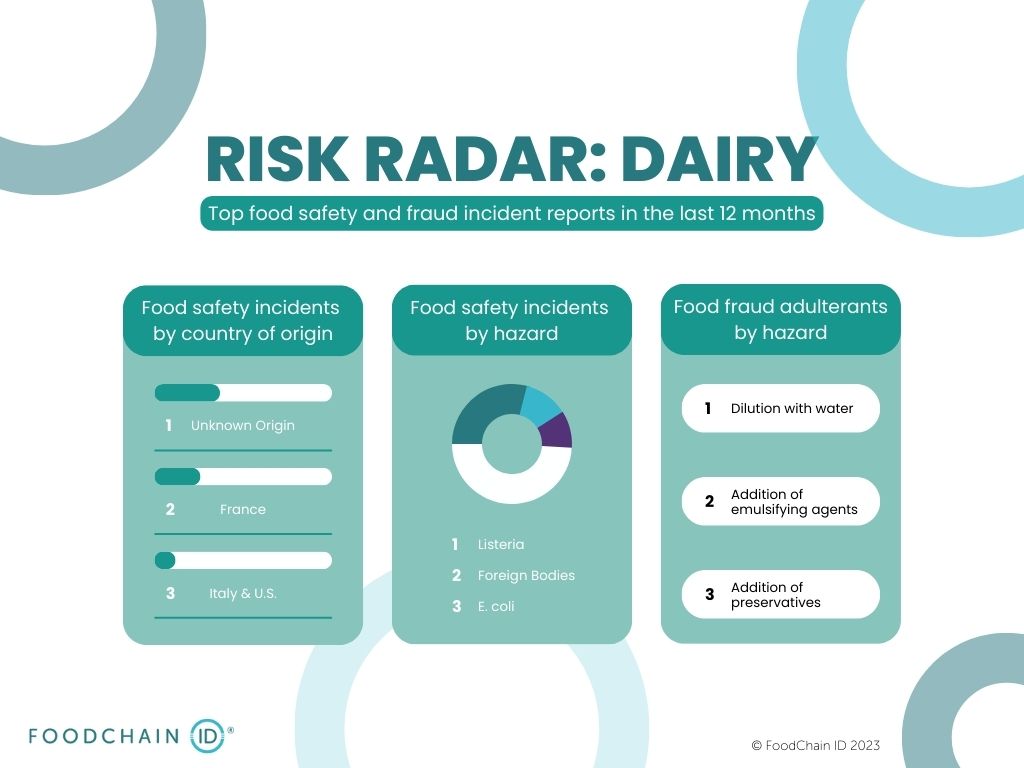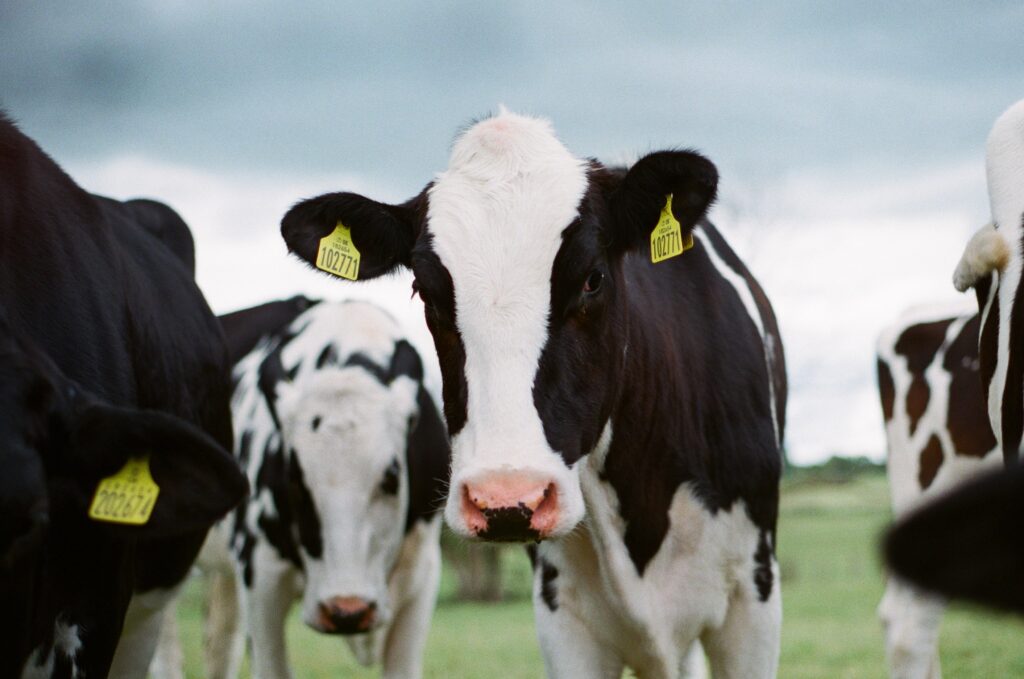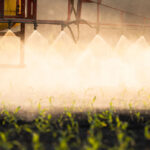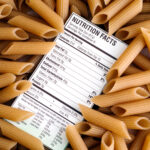Dairy products are a staple in the global food industry, so ensuring the safety and authenticity of these products is crucial to protect public health and maintain consumer trust. By understanding the risks and taking appropriate preventive measures, food safety quality assurance professionals can play a vital role in safeguarding the integrity of dairy products.
The data from this blog was obtained by running a couple of quick searches in FoodChain ID’s Food Fraud Database and Ingredient Risk Identification by HorizonScan.

Food Safety Risks in Dairy Products:
- Microbial Contamination: Dairy products are susceptible to microbial contamination, primarily from pathogens such as Salmonella, Listeria monocytogenes, and coli. These bacteria can enter the production chain through raw milk, contaminated equipment or improper handling practices. Proper pasteurization, sanitation protocols and monitoring are essential to mitigate the risk of microbial contamination.
- Chemical Hazards: Chemical contaminants like antibiotics, pesticides and mycotoxins pose potential risks in dairy products. Antibiotics used in dairy cattle can find their way into milk if withdrawal periods are not observed. Pesticides from contaminated feed or environmental sources can also accumulate in milk. Additionally, mycotoxins produced by molds in animal feed can contaminate milk and dairy products. Implementing strict control measures, conducting regular testing and ensuring compliance with regulatory limits are crucial steps in managing chemical hazards.
- Allergen Cross-Contamination: Dairy products, especially those containing milk proteins, can pose severe risks to individuals with dairy allergies. Cross-contamination can occur during processing, packaging or storage if proper segregation and cleaning practices are not followed. Implementing robust allergen management programs, including thorough cleaning and allergen testing, is vital to prevent allergen cross-contamination.
Food Fraud Risks in Dairy Products:
- Substitution of Ingredients: The dairy industry has experienced instances of fraudulent substitution, where cheaper ingredients are used as substitutes for genuine dairy components. For instance, diluted or adulterated milk can be blended with water, vegetable oils or other lower-cost substances. Such fraudulent practices not only compromise product quality but also mislead consumers. Rigorous supplier verification, ingredient traceability and testing programs are necessary to detect and prevent ingredient substitution.
- False Labeling and Misrepresentation: Food fraud incidents involving false labeling and misrepresentation have been observed in the dairy sector. Labels that falsely claim organic, free-range, or locally sourced dairy ingredients mislead consumers and undermine trust. Ensuring accurate labeling and verifying claims through certification programs can help protect against false labeling practices.
Incidents of Food Fraud in Dairy Products:
- Melamine Adulteration: One notable incident occurred in 2008 when melamine, a toxic chemical, was added to milk and dairy products in China. This adulteration was intended to artificially increase protein content. The incident resulted in a widespread public health crisis, with thousands of infants falling ill and several deaths reported. This incident underscores the need for stringent testing and quality control measures to detect and prevent intentional adulteration.
- Addition of vegetable oils: In some cases, vegetable oils have been fraudulently added to dairy products to extend the volume or manipulate the fat content. This adulteration not only misrepresents the nutritional composition of the product but also introduces potential allergens. Regular testing and verification of ingredients can help identify and mitigate such adulteration practices.
Making the food supply chain safer, one search at a time.
At FoodChain ID, we’re just as passionate about the safety of the food supply chain as you are. That’s why we offer the solutions and expertise your team needs to stay proactive and informed of food safety and fraud risks relevant to your ingredients, products and suppliers.
- Identify biological, chemical and physical hazards with Ingredient Risk Identification by HorizonScan, a daily supply chain monitoring system tracking over 500 commodities, 180+ countries of origin and over 40,000 suppliers with data from over 115 global sources.
- Identify food fraud risks with the Food Fraud Database, a searchable database of over 15,000 global records with information on 5,000+ food ingredients curated by fraud subject matter experts.











